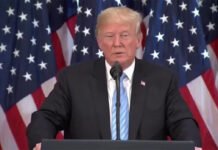A significant trade breakthrough has been achieved between the United States and Vietnam, marking a pivotal moment in the evolving economic relationship between the two nations. Announced by President Donald Trump, this newly inked agreement alters the balance of trade, offering new opportunities and challenges on both sides of the Pacific.
Under this landmark deal, American products will enter the Vietnamese market duty-free, dramatically boosting U.S. export potential. Conversely, Vietnamese exports to the United States will now face a 20% import duty, reshaping the previous trade dynamics and signaling a strong stance by the Trump administration on trade imbalances.
Duty-Free Access for U.S. Goods: A Strategic Economic Advantage
The most prominent feature of the agreement is the elimination of tariffs on U.S. goods entering Vietnam. This gives American manufacturers a competitive edge in a rapidly growing Southeast Asian economy, particularly in sectors like automotive, technology, agriculture, and consumer electronics.
With Vietnam’s expanding middle class and growing demand for high-quality goods, American brands now have a window of opportunity to establish dominant market positions. Products like U.S. beef, soybeans, industrial equipment, and advanced tech solutions are expected to benefit significantly.
Moreover, this access could lead to an increase in American investment in Vietnam, as companies seek to take advantage of reduced entry costs and the chance to establish regional supply chain hubs.
20% Tariff on Vietnamese Exports: Addressing the Trade Deficit
In contrast to the duty-free entry of U.S. goods into Vietnam, the agreement imposes a 20% tariff on all Vietnamese exports to the U.S. This strategic move is aimed at reducing America’s trade deficit, a key objective of President Trump’s broader economic policy.
The textile and apparel industry, a cornerstone of Vietnam’s export economy, is likely to be the hardest hit. Other affected sectors include electronics, footwear, furniture, and seafood—industries that have historically benefited from low U.S. import tariffs.
The 20% duty will compel Vietnamese manufacturers to reevaluate pricing strategies, production volumes, and export destinations, possibly leading to a shift in regional trade flows and renegotiation of existing contracts with American retailers.
April’s 46% Tariff Announcement: The Prelude to a Broader Strategy
The current agreement builds upon President Trump’s April 2025 announcement of a 46% tariff on Vietnamese imports, which sent shockwaves through the international trade community. That earlier move was a part of a sweeping policy to target countries with which the U.S. runs significant trade deficits.
This trade policy trajectory aligns with Trump’s commitment to ensuring that American producers are prioritized, and foreign trade practices that undercut U.S. industries are brought to heel. The latest agreement with Vietnam seems to be a calibrated response following intense diplomatic negotiations over the past months.
Vietnam’s Strategic Role in Southeast Asia
Vietnam has emerged as a strategic economic partner in the Indo-Pacific region, making this agreement especially significant. With a population exceeding 100 million, rapid industrialization, and a booming tech scene, Vietnam is considered one of the most promising emerging markets globally.
The U.S.–Vietnam agreement is not just a trade pact—it is a geopolitical signal. It reflects Washington’s intent to counterbalance Chinese influence in Southeast Asia by deepening economic cooperation with regional players.
Moreover, with the implementation of this trade deal, Vietnam will need to diversify its export markets and strengthen domestic innovation, possibly accelerating internal economic reforms.
Truth Social Announcement: A Direct Message from President Trump
President Trump personally unveiled the agreement via Truth Social, emphasizing the “growing cooperation” between the two countries. The announcement underscores the administration’s reliance on direct communication channels to shape public perception and bypass traditional media gatekeepers.
Trump’s message highlighted that the deal is “fair, balanced, and beneficial to American workers and industries,” framing it as a win-win outcome even as Vietnam adjusts to stricter trade terms.
Impact on Global Supply Chains
The trade agreement is expected to send ripple effects through global supply chains. American businesses that previously outsourced components from Vietnam might face cost increases, leading to strategic reconfigurations in procurement and logistics.
On the flip side, U.S. exporters will likely ramp up production to meet increased demand in Vietnam, potentially stimulating job growth in key American industrial regions such as the Midwest, the South, and parts of the West Coast.
This shift could also encourage American companies to relocate more supply operations to Vietnam, leveraging cheaper production costs while maintaining favorable trade terms under the new deal.
Reactions from Industry Stakeholders
American Business Leaders
Business organizations such as the U.S. Chamber of Commerce and the National Association of Manufacturers have praised the agreement, viewing it as a major step toward leveling the playing field for American products.
They anticipate a surge in demand for U.S. exports, especially in high-tech equipment, agricultural produce, and automotive components.
Vietnamese Exporters
Vietnamese business leaders have expressed concern over the 20% duty, citing potential disruptions to existing contracts and pressure on profit margins. However, some sectors see it as a call to innovate and increase domestic value-add, aiming to justify higher export prices.
There is growing interest in negotiating sector-specific exemptions, particularly in renewables and digital services, which are less reliant on low-cost manufacturing.
The Road Ahead: Opportunities and Obstacles
As this U.S.–Vietnam trade agreement begins to unfold, both countries will face a mixture of opportunities and regulatory hurdles. American exporters will need to navigate Vietnamese import standards, cultural expectations, and competitive local markets.
For Vietnam, the new tariffs could push policymakers toward economic diversification, expansion of intra-ASEAN trade, and accelerated negotiations on multilateral deals that reduce reliance on the U.S. market.
The agreement is a bold pivot in U.S. foreign trade policy, reinforcing President Trump’s message that American interests come first, while acknowledging Vietnam’s growing influence in the global economy.
Conclusion: A Turning Point in U.S.–Vietnam Trade History
This sweeping trade pact has not only redefined bilateral economic engagement between the United States and Vietnam but has also reshaped the regional and global trade architecture. With American goods flowing freely into Vietnam and a 20% barrier placed on Vietnamese exports, the scales of trade are being recalibrated.
In a world grappling with shifting geopolitical alliances and economic uncertainties, this agreement represents a decisive moment—one that could set the tone for future trade negotiations with other nations as the U.S. continues its campaign to protect domestic industries, secure jobs, and reinforce global leadership.
















